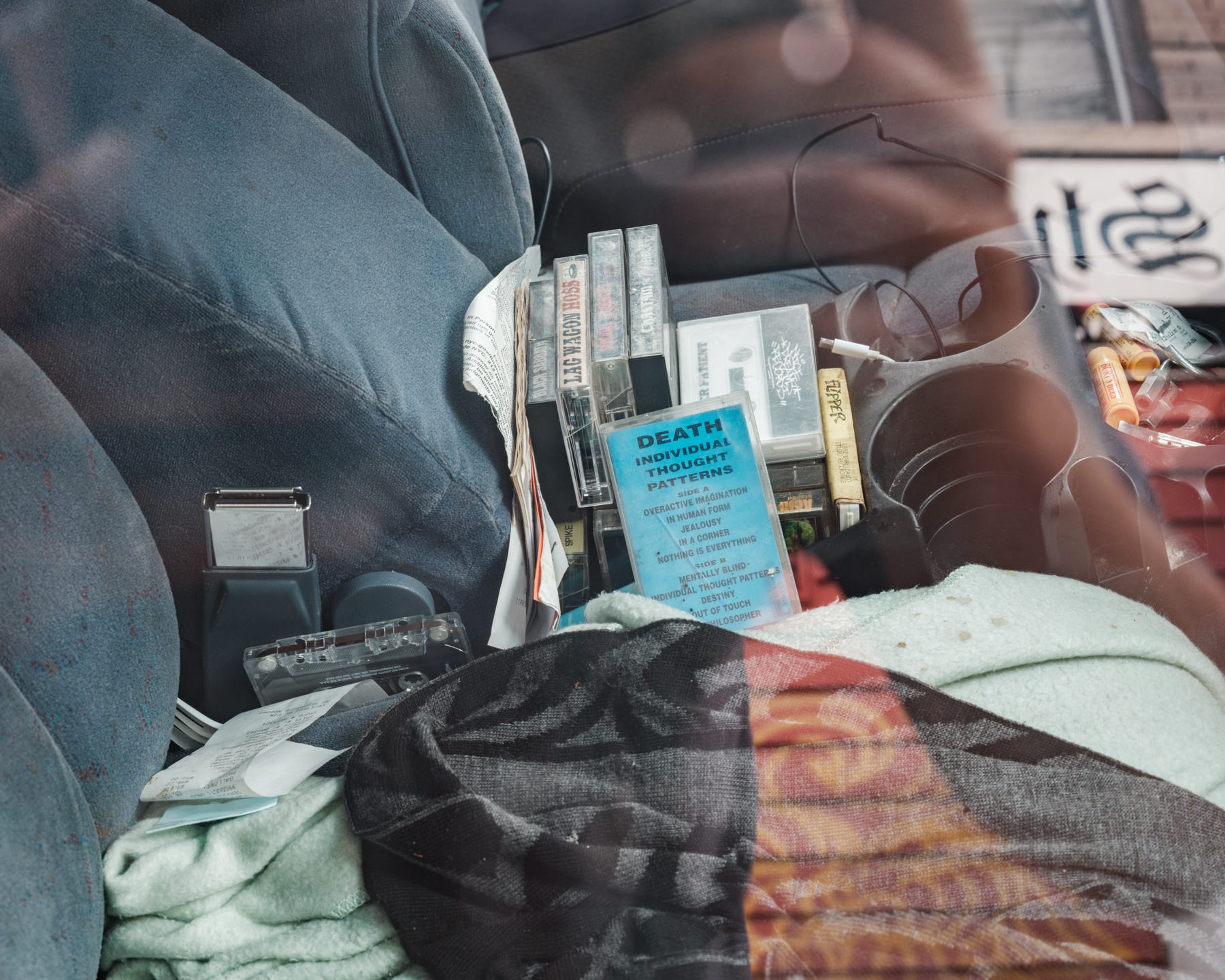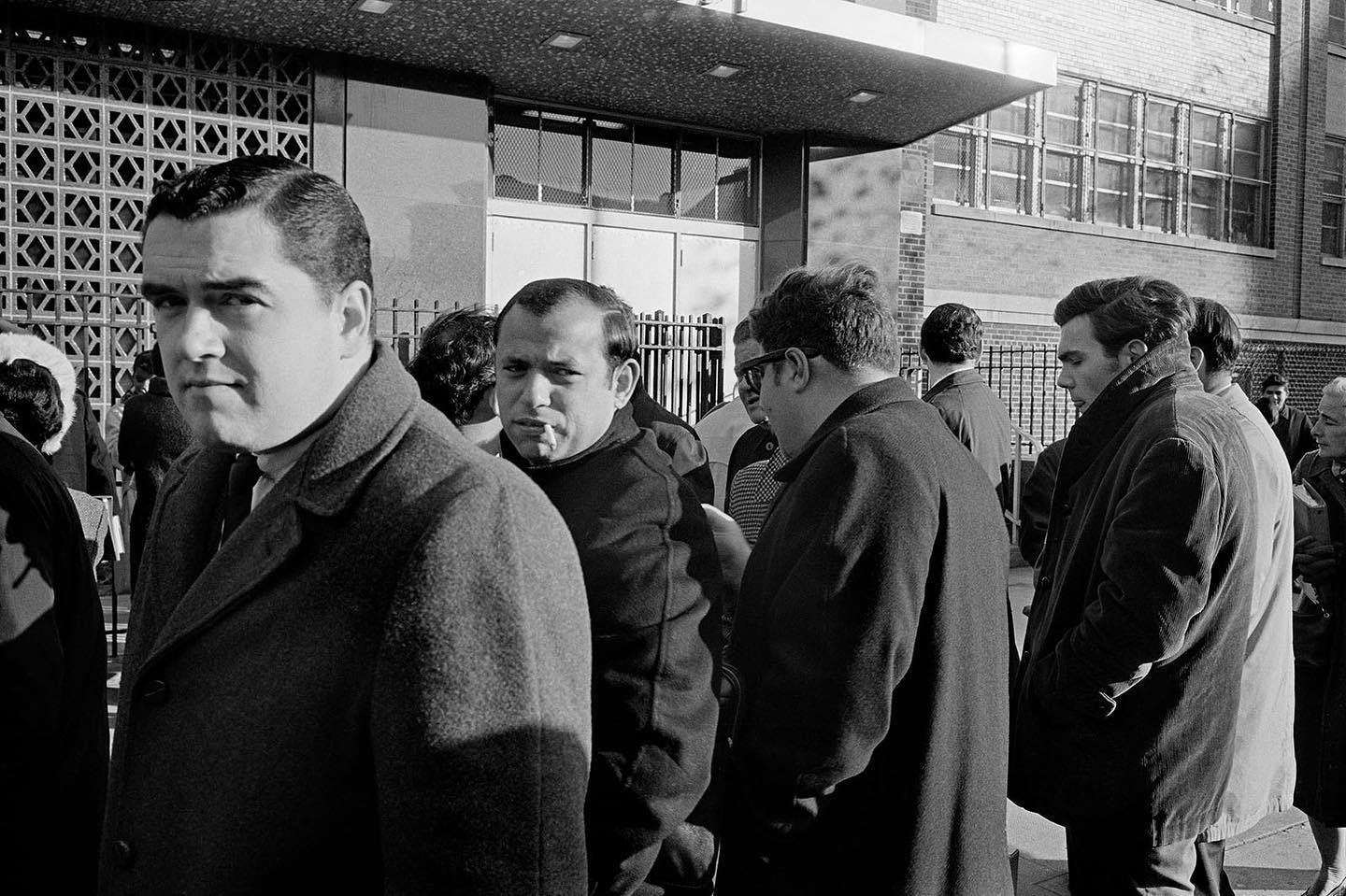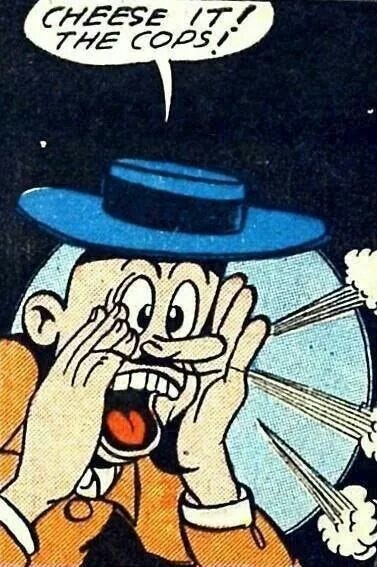At this point, now known as Ocean Hill, we have reached the highest point on the avenue and the most commanding elevation of ground in the city; and which, for the grandeur, beauty, and variety of its scenery, cannot be surpassed. The ocean view is especially grand and imposing.
The above quote, taken from an 1858 Brooklyn Eagle story, touts the natural beauty and views of Ocean Hill, a yet to be developed section of Brooklyn. This small triangle of a neighborhood, formed by Ralph Avenue, Broadway, and East New York Avenue, is sometimes considered part of Brownsville or Stuyvesant Heights. Broadway Junction, the Eastern tip of the Ocean Hill triangle, is one of the busiest transportation hubs in Brooklyn, serving over 100,000 riders every day. Five subway lines, six bus routes, and the Long Island Rail Road crisscross above and below the junction’s 26 acres of interweaving, elevated tracks.
CHEESE IT!
About 40 years after its first mention in the Brooklyn Eagle, Ocean Hill had been settled and was already undergoing a mild juvenile delinquent crime wave. A 1906 article from The Brooklyn Chat asks a Mr. Harry P. Butler (who must have been mercilessly teased as a child) why so many children were degenerating into corner loafers.
Not a little of the rowdyism in young men might be attributed to a laxity on the part of the parents while a boy is in knickerbockers.
Butler then called attention to the fact that Rockaway avenue on Sunday is a paradise for infant crap-shooters, whose manipulation of the bones is interrupted only by the approach of an infrequent policeman, when a "Cheese it, the cop!" sends the knickerbockered gamblers scurrying into some hall or doorway until the coast is again clear.
That last sentence.. 🤌
By the 1920s, Ocean Hill was an almost 100% Jewish neighborhood. Like Utopia in Queens, living in Ocean Hill was seen as an improvement over the crowded tenements of the Lower East Side. Many of the churches in this part of Brooklyn are converted synagogues, as evidenced by the Stars of David adorning their facades.

After the Second World War ended, the Jewish population started moving out of Ocean Hill, relocating to Long Island and Queens. At the same time, Puerto Ricans and African Americans began moving in. By the late 1960s, Ocean Hill and Bedford-Stuyvesant formed the largest Black community in the United States.
THREE STRIKES
Ocean Hill was the nexus of a series of city-wide school strikes, ground zero for the escalating racial, religious, and class tensions that roiled the city in the late 60s.
During the mid-1960s in NYC, the Black dropout rate was double that of the rate among the student body as a whole. At J.H.S 271, the flagship school in the Ocean Hill - Brownsville district, 73 percent of the pupils were below grade level in reading, and 84 percent were below grade in math.1 Overcrowding was so bad that kids had to go to school in shifts.
Parents were frustrated that the members of the predominantly white local school board, none of whom lived in the neighborhood, did not represent them. They called for community control of the schools. Mayor John Lindsay agreed and, with help from the Ford Foundation, established three decentralized school districts (Ocean Hill-Brownsville, Harlem, and the Lower East Side) as a pilot program for the rest of the city.
Some of the changes these new school districts implemented included hiring additional minority teachers, teaching more Black and African history, de-emphasizing grades, and, in the case of a predominantly Puerto Rican school, instituting a fully bilingual curriculum. What’s not to like? Well, for the United Federation of Teachers (UFT), led by Al Shanker, plenty. Decentralizing the school districts meant undermining the union's power, and some teachers resented having to answer directly to parents’ demands.
Things came to a head in 1968 when the Ocean Hill school district fired 19 teachers and administrators at J.H.S 271, all white except for one black teacher who was fired by accident and immediately reinstated. The board cited the teachers’ lack of investment and unwillingness to get on board with the new system as reasons for their dismissal.
Al Shanker immediately called for a city-wide strike, and 50,000 New York City teachers walked off the job.
Despite daily picketing, snipers on the rooftop, horse-mounted patrols, and throngs of reporters, classes in Ocean Hill continued. Parents assisted in the classroom, and community volunteers took over school maintenance to ensure the facilities kept running since the janitors were also on strike.
To add to an already combustible situation, charges of racism and anti-semitism were levied at the new school board, administrators, and parents. Never mind that 70% of the replacement teachers were white, and half of these were Jewish. The narrative, pushed by some members of the UFT, persisted and ultimately undermined support for community-controlled school boards. The strikes finally ended on Sunday, November 17, 1968 when the New York State Education Commissioner asserted state control over the Ocean Hill–Brownsville district.
The fallout from Ocean Hill would shape the city’s political and social future for decades to come.
Ocean Hill–Brownsville also helped transform the city’s political culture, weakening the city’s liberal coalition and strengthening the power of outer-borough whites who would go on to elect Ed Koch in 1977 and Rudy Giuliani in 1993. In the starkest terms, the strikes pitted wealthy whites and poor blacks against middle-class whites and caused massive cognitive dissonance for many liberals who found themselves condemning striking unionized workers for being reactionary and bigoted.2
There is so much more to this story than I can cover here, so if you’re interested, I highly recommend checking out this 2 part podcast on the strike by School Colors.
STOREFRONT
Brooklyn is known as the borough of churches, and Ocean Hill is no exception. I’ve always been drawn in by examples of adaptive reuse in the city and storefront churches in particular. I had a project called 20 Storefront Churches in Brownsville. Once I started working on this week’s newsletter, however, I learned that several of the churches I had photographed were not, in fact, in Brownsville but instead in Ocean Hill. This revelation simultaneously annoyed and pleased me. In light of my newfound knowledge, I am posting a set of images I am calling:
9 Storefront Churches I Thought Were In Brownsville But Are Really In Ocean Hill, Though Some People Call Ocean Hill “Ocean Hill-Brownsville.”
SIGHTS AND SOUNDS


FEATURED PHOTO
Somehow I wasn’t familiar with Magnum photographer Richard Kavlar’s work before coming across this fantastic image he made in Ocean Hill in 1969. Kalvar’s incredible archive of street photography spans many decades. Please comment below if you know his work and can recommend any of his books. More can be seen on the Magnum website.
NOTES
I’m not going to lie; when Harry P. Butler spoke of bone manipulating infant crapshooters calling out, ”Cheese it the Cops!” I was intrigued. “Cheese it” is not an expression you hear every day. Turns out, it used to be. According to James Hardy Vaux’s 1812 tome, A New and Comprehensive Vocabulary of the Flash Language, to “cheese it” meant to keep quiet or to stop. The expression was popular in England in the early 19th century and soon made its way to the States.3
The running theory is that “cheese it” was a bastardization of cease it. More imaginative etymologists postulate that it is a reference to the cheese course being the final bite of the meal, effectively ending it. I think, like a washed-rind cheese, that theory stinks.
A $500 million investment plan is supposed to “reimagine” Broadway Junction by 2030.
Wikipedia’s compelling origin story for the neighborhood’s moniker: “Ocean Hill was named because it was slightly hilly.”
Cannato, Vincent, and Jerald Podair. “The 1968 New York City School Strike Revisited.” Commentary Magazine, 14 May 2018, www.commentary.org/articles/vincent-cannato/1968-new-york-city-school-strike-revisited/.
Cannato, Vincent, and Jerald Podair. “The 1968 New York City School Strike Revisited.” Commentary Magazine, 14 May 2018, www.commentary.org/articles/vincent-cannato/1968-new-york-city-school-strike-revisited/.
https://www.barrypopik.com/index.php/new_york_city/entry/cheese_cheese_it_the_cops

































Fascinating as always, and Kalvar photo quite incredible!
Amazing Kavlar photo. I want to know what happened before and after that shot!